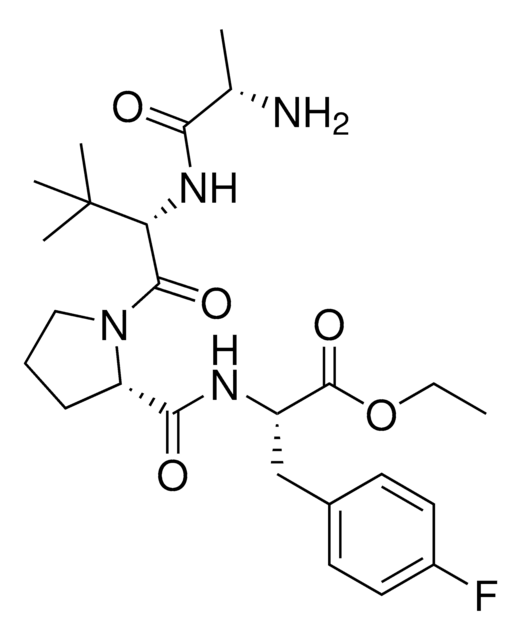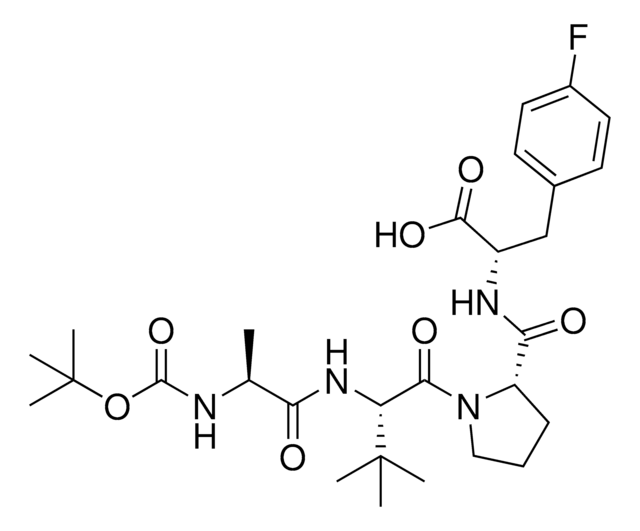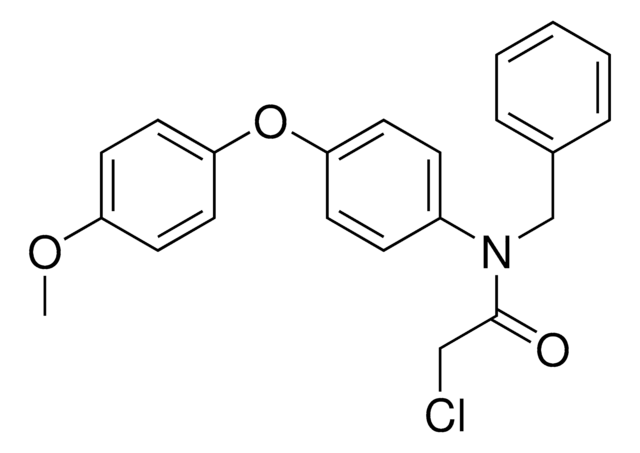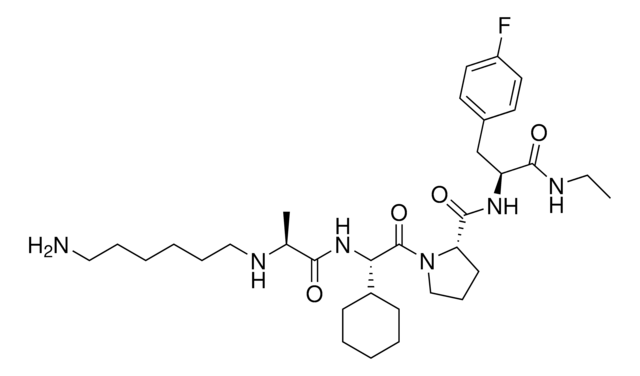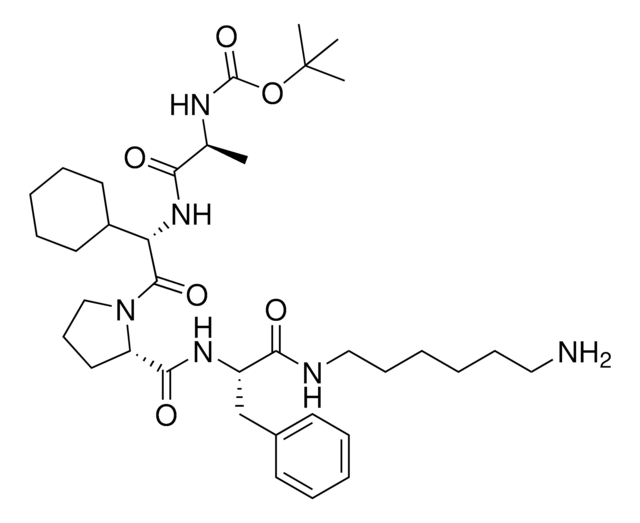917222
A1V2PF1-NHEt
≥95%
Synonyme(s) :
(S)-1-((S)-2-((S)-2-Aminopropanamido)-2-cyclohexylacetyl)-N-((S)-1-(ethylamino)-1-oxo-3-phenylpropan-2-yl)pyrrolidine-2-carboxamide, AVP ligand, IAP E3 ligase lead for protein degrader research, SNIPER building block
About This Item
Produits recommandés
ligand
A1V2PF1
Niveau de qualité
Pureté
≥95%
Forme
powder
Pertinence de la réaction
reagent type: ligand
Groupe fonctionnel
amine
Température de stockage
2-8°C
Chaîne SMILES
N[C@H](C(N[C@H](C(N1CCC[C@H]1C(N[C@H](C(NCC)=O)CC2=CC=CC=C2)=O)=O)C3CCCCC3)=O)C
Catégories apparentées
Application
A1V2PF1-NHEt conjugates are also available for degrader synthesis. Browse our full synthesis offering here for streamlining SNIPER and PROTAC® degrader libraries: Degrader Building Blocks
916943 A1V2PF1-NHEt-C6-NH2
917206 A1V2PF1-NHEt-C10-NH2
917451 A1V2PF1-NHEt-PEG1-NH2
917702 A1V2PF1-NHEt-PEG3-NH2
Technology Spotlight: Degrader Building Blocks with Inhibitor of Apoptosis Protein (IAP) In Silico-Derived Ligands
Autres remarques
Informations légales
Produit(s) apparenté(s)
Code de la classe de stockage
11 - Combustible Solids
Classe de danger pour l'eau (WGK)
WGK 3
Point d'éclair (°F)
Not applicable
Point d'éclair (°C)
Not applicable
Certificats d'analyse (COA)
Recherchez un Certificats d'analyse (COA) en saisissant le numéro de lot du produit. Les numéros de lot figurent sur l'étiquette du produit après les mots "Lot" ou "Batch".
Déjà en possession de ce produit ?
Retrouvez la documentation relative aux produits que vous avez récemment achetés dans la Bibliothèque de documents.
Articles
Targeted protein degradation reduces disease-relevant proteins in cells using small molecules, hijacking endogenous proteolysis systems.
Plate of 80 ligands against E3 ligase IAP designed by ComInnex; allows creation of bifunctional targeted protein degraders or molecular glues.
Protein Degrader Building Blocks are a collection of crosslinker-E3 ligand conjugates with a pendant functional group for covalent linkage to a target ligand.
Notre équipe de scientifiques dispose d'une expérience dans tous les secteurs de la recherche, notamment en sciences de la vie, science des matériaux, synthèse chimique, chromatographie, analyse et dans de nombreux autres domaines..
Contacter notre Service technique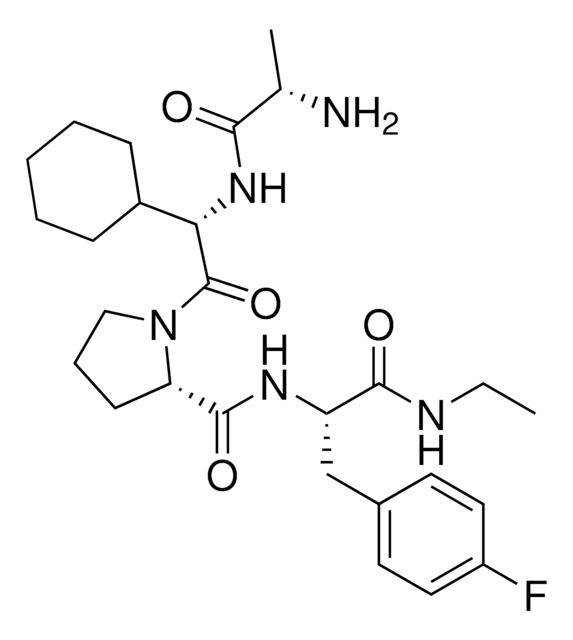
![3-(2-(tert-Butoxycarbonyl)-5-oxo-2,6-diazaspiro[3.6]decan-6-yl)benzoic acid](/deepweb/assets/sigmaaldrich/product/structures/420/426/cfe58d4f-a57d-4267-bc9b-4de0e2487e05/640/cfe58d4f-a57d-4267-bc9b-4de0e2487e05.png)

